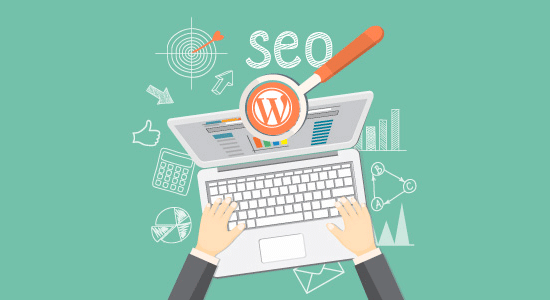
In this article, we are going to discuss how to improve SEO on WordPress.
Why did you choose WordPress? It might be because you knew that it is SEO friendly. You can see all those lists of powerful features offered by WordPress on their homepage. Yes, WordPress is a powerful platform for creating sites but launching it simply wouldn't rank at the top of the search engines.
You should have good knowledge and the right SEO tactics to improve SEO and drive huge traffic from Google or other search engines.
What is WordPress?
WordPress is one of the most popular content management system and powers numerous sites that you browse every day. WordPress powers sites of the global giants like BBC America, TechCrunch, Time.com to name few.
WordPress was started in 2003 with the purpose of blogging but sooner it became able to create a powerful and flexible solution to run entire websites. Looking in 2020 it is also capable of running eCommerce sites.
What is WordPress SEO?
Most of the people think that WordPress is a magic weapon for SEO without any effort. It is not the case, it really requires a lot of time and effort to rank well. But the beauty of WordPress is that anyone without technical knowledge can improve seo on WordPress.
WordPress itself isn't sufficient for best seo practices but tons of SEO plugins available on WordPress makes it excellent for improving SEO. To understand simply, WordPress simply makes traditional SEO techniques and strategies easier.
So, below we are going to focus on employing traditional on-page as well as technical SEO practices within WordPress.
How to improve SEO on WordPress?
There are few basics to cover before you learn how to properly optimize your site and generate large web traffic.
1. Choose a proper hosting provider
You should make sure that your site is hosted with a reliable hosting provider. You should go through uptime, site speed and all the security factors before deciding your web host.
Note that site speed creates a direct impact on your site's SEO performance and degrades your website's quality in case of poor uptime and security vulnerabilities.
Don’t go for the cheapest option available, as it can make your site go through performance issues. WordPress itself has recommended three host- Bluehost, SiteGround and DreamHost. You can use any one of them if you have no idea from where to start.

2. Install SEO friendly WordPress Theme
On the installation, you will notice their own default theme- Twenty-Twenty. But it may not be the theme you prefer. WordPress offers thousands of free themes that are available straight from the dashboard. There are many premium themes as well, but the only task is to select the theme that is SEO friendly.
Many WordPress themes claim to be SEO friendly but there might be bundles of scripts and plugins that are not useful for you. This affects site performance. So, before installing a theme, you can run its demo through Google's web.dev and study the insights on potential performance and SEO issues.
This insight can provide you with confidence that you are choosing the correct theme for your website.
 Source: semrush.com
Source: semrush.com
3. Install free SEO plugins
You will need to install SEO plugins before you begin to optimize your website. WordPress offers couple fo free SEO plugins which are commonly recommended ( Yoast SEO and All in One SEO Pack). But we would recommend Yoast SEO for improving SEO. Keep in mind that plugins wouldn't automatically optimize your website, they are just the tools that make it easier to implement best practices for SEO.
You can log in to the admin panel and " add new" plugin page on the left-hand menu. Plugins-> Add new. Search for plugins and hit " install now" to install it. In order to use that plugin, you will need to activate it.
 Source: semrush.com
Source: semrush.com
4. Enable SEO friendly permalinks
WordPress offers you a various option for structuring URLs and you will need to choose the most SEO friendly option.
WordPress by default uses URLs like https:// domain.com/?p=123 which are not search engine friendly. These type of URLs provide no clue about the page from the URL alone.
WordPress allows you to choose a custom URL structure at Settings-> Permalinks.
You will have to choose " Post name" for your permalinks for most of the sites.
5. Set your own preferred domain
Having domain https://www.domain.com or https://domain.com won't have any impact on your SEO but you should consider accessing your site on just one of these because Google considers them as different URLs.
To do this head to Settings-> General and choose your preferred domain from here.
If you are a new user you can feel free to choose either option but should use the same version that you historically used for replacing the existing site.
Note: You will need to have an SSL certificate in place to make your site use HTTPS. You can request your hosting provider or developer to install the certificate or explore the free " Let's Encrypt" solution.
 Source: wordpress.org
Source: wordpress.org
6. Check Site's visibility settings
WordPress offers you ability even to discourage search engine from indexing your website. This means your site won't rank. This feature is commonly used by developers to stop the search engines from indexing the pages that are not complete.
You can check your site's visibility under Settings-> Reading. You should untick the box if it is ticked.
7. Submit your XML sitemap and verify it with Google Search Console
You will need to verify your site with Google Search Console if you haven't done it previously.
You can follow the verification steps and choose the " HTML tag" method. Now jump to the Yoast plugin and choose: SEO-> General-> Webmaster Tools.
Under " Google verification code" enter the contents of HTML tags.
Now, you will have to submit your XML sitemap. Go to Sitemap's tab and submit your sitemap location ( sitemap.xml). Yoast will generate XML sitemap by default.
 Source: semrush.com
Source: semrush.com
8. Use Heading tags
An XML sitemap helps the crawlers to see the organization of your website but it gets no idea about the individual content of your site. So, you will need to use heading tags. You should make use of heading tags throughout the content.
 Source: dreamhost.com
Source: dreamhost.com
9. Use responsive design on your site
Nowadays most of the people prefer browsing the internet with mobile devices. So, your website must be able to perform well on any types of devices that are used for browsing the internet which means it should react and adapt to each user's device.
Why is responsive design so important? Responsive design is important because Google uses it as one of the ranking factors. Responsive sites tend to appear high on SERPs.
For WordPress, the best way to make a responsive site is to select a theme that supports almost every devices and make sure to check each theme's SEO features as well to rank high on Google and other search engines.
10. Use internal linking
In order to establish topical relevancy between different pages, you will need to use internal linking within the content. This should be done to pass authority earned from the external links and for efficient users navigation within the pages.
Adding internal links to other pages in WordPress is really simple. You will need to highlight the text to link and click the link button on the toolbar. Now, paste the URL of the page within the site.
















Readers Comment